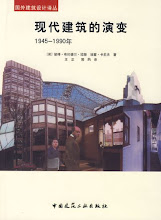Monday 28 November 2011
Friday 25 November 2011
Forthcoming Publication
Rome, Postmodern Narratives of a Cityscape
Editors: Dom Holdaway and Filippo Trentin
Warwick Series in the Humanities
Hb: c.256pp: 2013
978 1 84893 349 1: 234x156mm: £60.00/$99.00
978 1 78144 000 1
Until the mid-twentieth century the Western imagination seemed intent on viewing Rome purely in terms of its Classical past or as a stop on the Grand Tour. This collection of essays looks at Rome from a postmodern perspective, including analysis of the city's 'unmappability', its unity, and its iconic status in literature and film.
Contents
Introduction – Dom Holdaway and Filippo Trentin
Part I: Knowing Rome
1 Roma intra muros, Roma extra muros – Marco Cavietti
2 'The Paradise, The Grave, The City, and The Wilderness': A Travelogue of Imagined Rome – Eamonn Canniffe
3 The Explosion of Rome in the Fragments of a Postmodern Iconography – Fabio Benincasa
Part II: Fragmented Topography
4 Topophilia and Other Roman Perversions – John David Rhodes
5 Filming on the Campidoglio – Lesley Caldwell
6 Simulacra and Deconstruction: Anachronistic Clashes Between the Classical and the Postmodern – Filippo Trentin
7 A Postmodern Gaze on the Gazometro – Keala Jewell
Part III: Situating Rome
8 Ecclesiastical Icons: Defining Rome through Architectural Exchange – James Robertson
9 Roma Interrotta, 1978–2010: A Retrospective Historical Analysis – Léa-Catherine Szacka
10 Las Vegas, by Way of Rome: The Eternal City and American Postmodernism – Richard W Hayes
This volume will gather together the presentations from the University of Warwick conference The Postmodern Palimpsest: Narrating Contemporary Rome held earlier this year. The images from my keynote paper are below.
The book may be ordered here
Tuesday 22 November 2011
Saturday 19 November 2011
Wednesday 16 November 2011
The Architectural Consequences of Preservation
The eighth volume in the Ashgate Studies in Architecture, a series edied by Eamonn Canniffe, will be published shortly.
Materan Contradictions: Architecture, Preservation and Politics by Anne Parmly Toxey
Shaped by encrusted layers of development spanning millennia, the southern Italian city of Matera is the ultimate palimpsest. Known as the Sassi, the majority of the ancient city is composed of thousands of structures carved into a limestone cliff and clinging to its walls. The resultant menagerie of forms possesses a surprising visual uniformity and an ineffable allure. Conversely, in the 1950s Matera also served as a crucible for Italian postwar urban and architectural theory, witnessed by the Neorealist, modernist expansion of the city that developed in aversion to the Sassi. In another about-face, the previously disparaged cave city has now been recast as a major tourist destination, UNESCO World Heritage Monument, and test subject for ideas and methods of preservation.
Set within a sociopolitical and architectural history of Matera from 1950 to the present, this book analyses the contemporary effects of preservation on the city and surrounding province. More broadly, it examines the relationship between and interdependence of preservation and modernism within architectural thought. To understand inconsistencies inherent to preservation, in particular its effect of catalyzing change, the study lays bare planners' and developers' use of preservation, especially for economic goals and political will. The work asserts that preservation is not a passive, curatorial pursuit: it is a cloaked manifestation of modernism and a powerful tool often used to control economies. This study demonsrates that preservation also serves to influence societies through the shaping of memory and circulation of narratives.
Sunday 13 November 2011
Thursday 10 November 2011
Monday 7 November 2011
Friday 4 November 2011
Tuesday 1 November 2011
Subscribe to:
Posts (Atom)














































